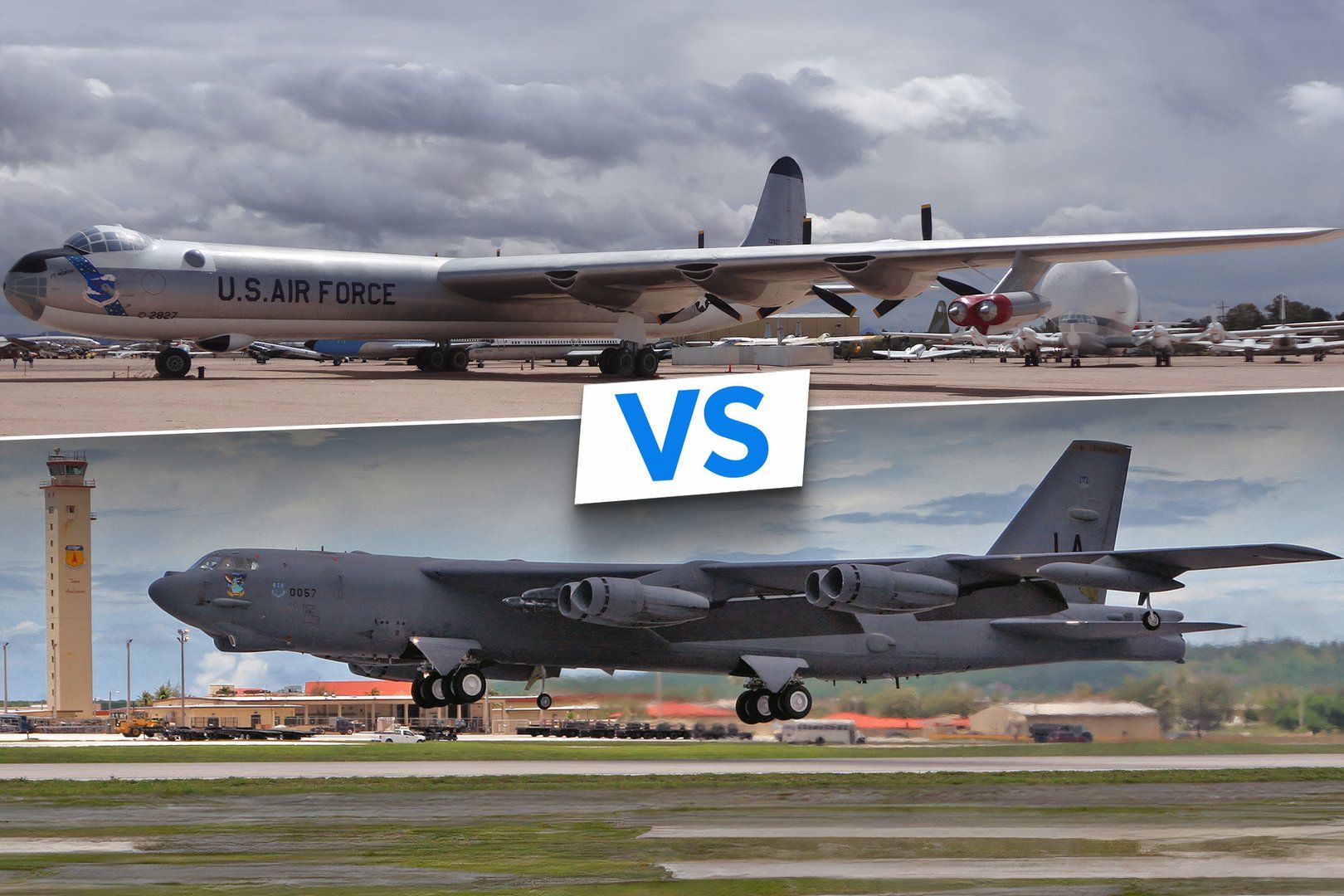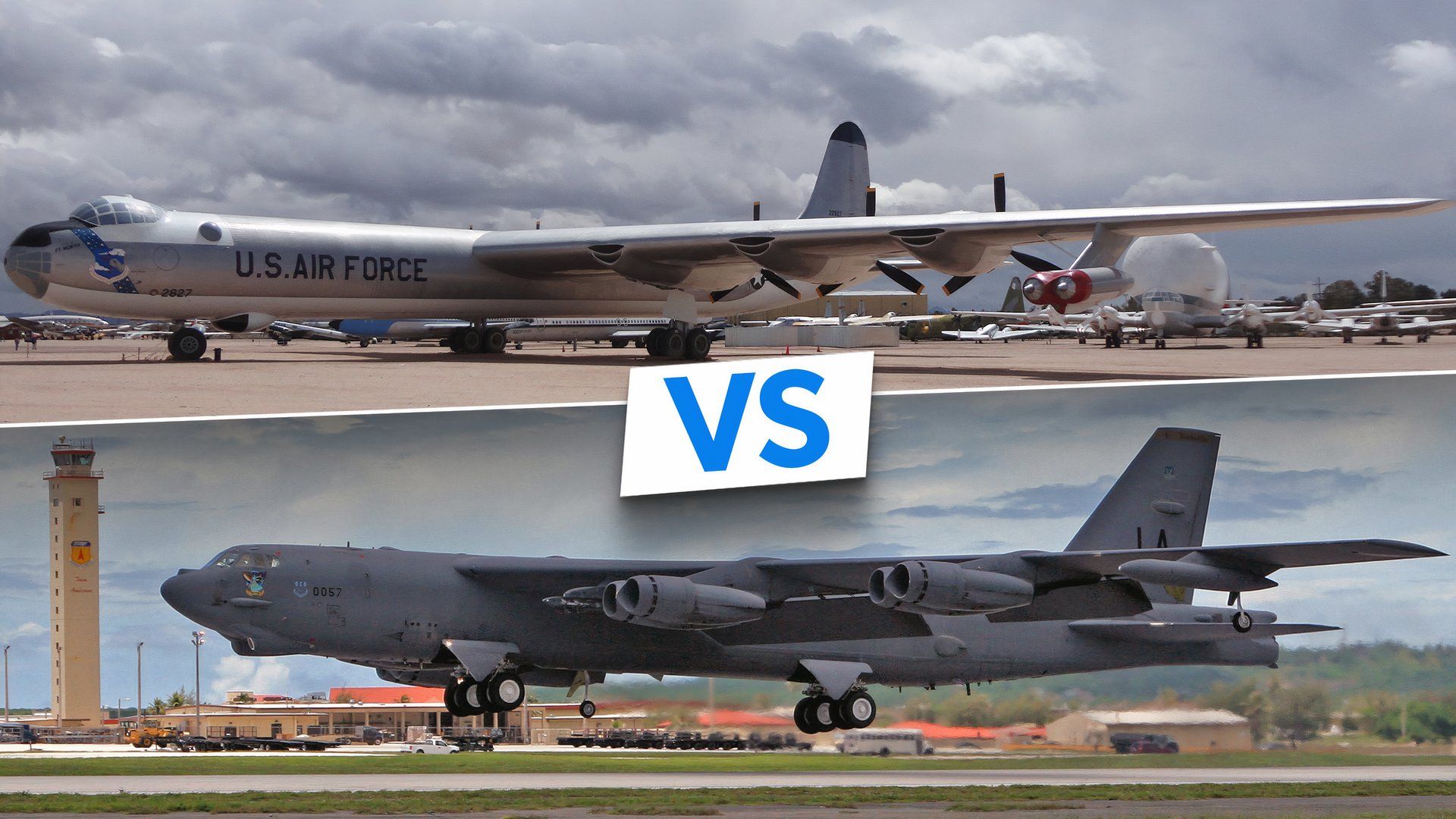
The Convair B-36 “Peacemaker” was a bomber aircraft built for the United States Air Force (USAF) and supported the war effort in the 20th century. Having its first flight in August 1946, the aircraft served from 1949 to 1959. Over 380 aircraft were built over its 10-year lifespan. The B-36 was quite an interesting aircraft, not only because of its impressive size, but also because of its history.
During the Harry S. Truman administration, the idea was proposed and followed through, in which a policy of containment would be used during the war. There were fears that the Soviet Union would spread communism. The Communist Party of the Soviet Union (CPSU) started in 1917 and ended when the Soviet Union dissolved in 1991. During President Truman’s speech in 1947, which was recorded by the United States National Archives, he went on to explain the need for deterrence against the hostile threats the United States faced at the time.
“It must be the policy of the United States to support free peoples who are resisting attempted subjugation by armed minorities or by outside pressures.” – Harry S. Truman to a joint session of Congress, 1947
The Big Bomber That Flew
Although the B-36 never saw combat, it greatly helped deter enemies. Its wingspan was 230 ft (70 m), the longest of any bomber aircraft in history, and its length was 162 ft. 1 in. (49.4 m). The aircraft was so large because it needed to carry a tremendous amount of fuel and weapons for long-range missions.
The National Museum of the United States Air Force says that the B-36 “carried 86,000 pounds of nuclear or conventional bombs.” The aircraft carried various types of bombs, including the T-12 Cloudmaker. The B-36 entered into service during the Cold War in 1948, with its main purpose being to carry nuclear weapons to deter further aggression.
The idea for a complex bomber started in 1941 when the world was getting nervous that Great Britain could succumb to a German Blitz attack. The Axis powers had controlled most of Europe and could have taken Britain, but the United States did not want that to happen. Therefore, they contracted the Lockheed Corporation to create the B-36.
Lockheed Martin says that the B-36 was “built as a contingency plan. If Britain fell, the United States would be forced to launch attacks from its own soil, requiring a bomber capable of flying long distances and dropping large payloads.”
|
General Characteristics |
Convair B-36 “Peacemaker” Stats |
|---|---|
|
Maximum Speed: |
435 mph |
|
Cruising Speed: |
230 mph |
|
Range: |
10,000 miles |
|
Ceiling: |
45,700 ft |
|
Span: |
230 ft. |
|
Length: |
162 ft. 1 in. |
|
Height: |
46 ft. 9 in. |
|
Weight: |
410,000 Ibs loaded |
Source: National Museum of the United States Air Force
The B-36: Problems in the Sky
The B-36 was a very slow aircraft compared to other bombers. With a max speed of only 435 mph, many naval officers criticized its speed, vulnerability, and effectiveness against enemy defenses. In 1949, a series of congressional hearings discussed the B-36’s problems.
The Naval History and Heritage Command said the media referred to these hearings as “The Revolt.” The Command also said that “the B-36 served as the proximate cause of the “revolt,” [and] the entire matter reflected the contentious and unsettled configuration of national security and defense establishment following World War II.”
Additional problems with the aircraft included mechanical issues, weather, pilot errors, and complex equipment failures.
When the aircraft was designed, 6 air-cooled piston R-4360-41 Pratt and Whitney engines were used. Lockheed Martin says that the aircraft was “composed of a familiar cigar-shaped fuselage, its propellers were positioned in an unorthodox rearward-facing pusher configuration, which succeeded in smoothing the airflow over its massive wings.
The B-36 had many mechanical problems, which caused multiple crashes. In one accident on February 13th, 1950, a Convair B-36 crashed in British Colombia, Canada. Treacherous weather built up ice on the wings, preventing a smooth take-off, and the aircraft crashed shortly thereafter. That was not the last mishap.
As John M. Clearwater explains in the Bulletin of the Atomic Scientists,
“Nine months after the B-36 crash in British Columbia, another U.S. bomber was forced to drop an atomic bomb, without its nuclear core, in Canada. It was the fifth U.S. ‘broken arrow,’ and the second abandoned in Canada. On November 10, 1950, a B-50A bomber transporting one of 11 ‘special weapons’ from Goose Bay, Newfoundland, to Arizona lost power in two of its four engines and discarded its payload over the St. Lawrence River in Quebec. Just before 4 p.m., the bomb’s more than two tons of high explosives detonated in the air, startling hundreds of Quebecers. Witnesses thought war had begun. The Pentagon issued a cover story stating that a bomber with engine trouble had dropped its entire load of conventional practice bombs.”
Despite its challenges, the B-36 was highly effective at deterring the enemy. Lockheed Martin says this is why its aircraft got the nickname “Peacemaker.” The aircraft was also crucial in the learning process for the United States Air Force and its next successful aircraft, the Boeing B-52 Stratofortress.
The B-52: The Stratofortress of Support
The Convair B-36 “Peacemaker” successor was the Boeing B-52 Stratofortress. Contracted in 1946, the B-52 was used in the Cold War and has been used by the United States Air Force since 1955. The first model of the B-52, model “A,” was used during the Cold War under the Strategic Air Command (SAC), which was led by General Thomas S. Power.
One of the SAC’s main responsibilities was overseeing bombers such as the B-52. Under General S. Powers’ command, he purposely kept some B-52s in the sky, ready and armed for combat at a moment’s notice. This operation, known as Operation Chrome Dome, was one of many missions in the Cold War that put the B-52s in the sky armed with thermonuclear weapons.
The first models of the B-52 were able to carry up to 70,000 pounds of bombs.
In response to this new threat close to home, Strategic Air Command bases around the U.S., including the SAC Alert crews at Eglin Air Force Base, were placed on airborne alert priority, which meant that aircraft were flying missions of twenty-four hours in length, more than double the routine, ten-hour missions that B-52 aircraft usually flew. – Air Force Material Command, Eglin Air Force Base
Over the years, the B-52 has had many models, each with additional modifications. The current model is “H.” The B-52H has a larger capacity and can carry a maximum weight of 488,000 pounds.
It is a long-range bomber that the United States Air Force says can perform a variety of missions and expects to “operate [the] B-52s through 2050.”
|
General Characteristics |
Boeing B-52A Stratofortress Stats |
|---|---|
|
Contractor: |
Boeing Military Airplane Co. |
|
Primary Function: |
Heavy Bomber |
|
Engine Power: |
8 Pratt & Whitney engines TF33-P-3/103 Turbofan |
|
Thrust: |
Up to 17,000 pounds per engine |
|
Wingspan: |
185 feet (56.4 meters) |
|
Height: |
40 feet, 8 inches |
|
Weight: |
Approximately 185,000 pounds (83,250 kilograms) |
|
Maximum Takeoff Weight: |
488,000 pounds (219,600 kilograms) |
|
Fuel Capacity: |
312,197 pounds (141,610 kilograms) |
|
Payload: |
70,000 pounds (31,500 kilograms) |
|
Speed: |
650 miles per hour (Mach 0.84) |
|
Range: |
8,800 miles (7,652 nautical miles) |
|
Ceiling: |
50,000 feet (15,151.5 meters) |
Source: United States Air Force
Significant improvements were made across the industry, and the B-36 was eventually replaced with the Boeing B-52 Stratofortress. The B-52’s power is derived from 8 turbofan engines, which is one reason it is one of the safest aircraft in the skies.

